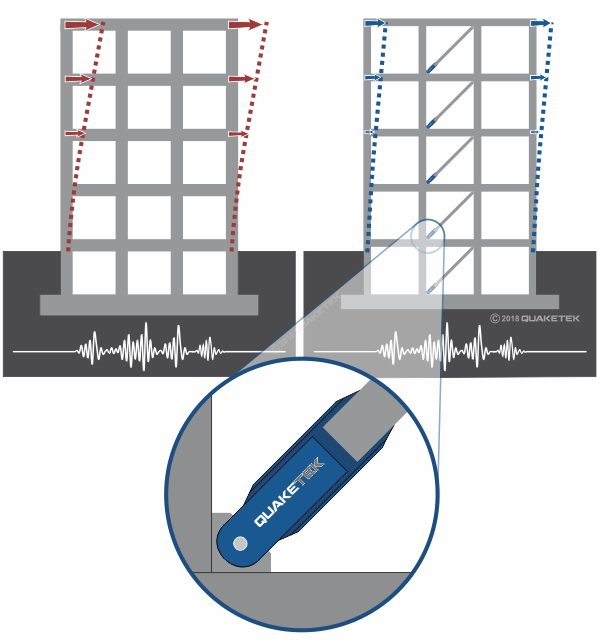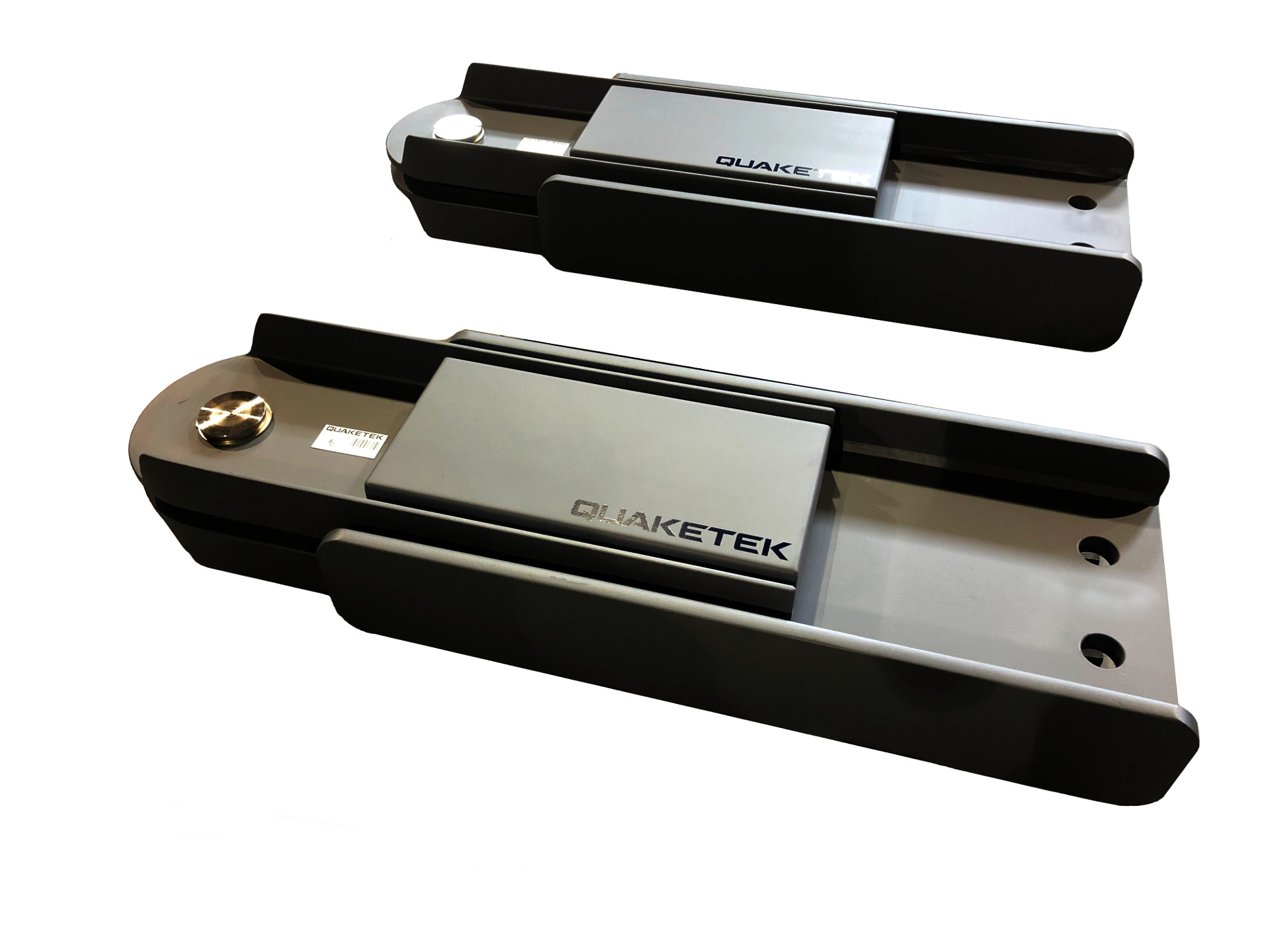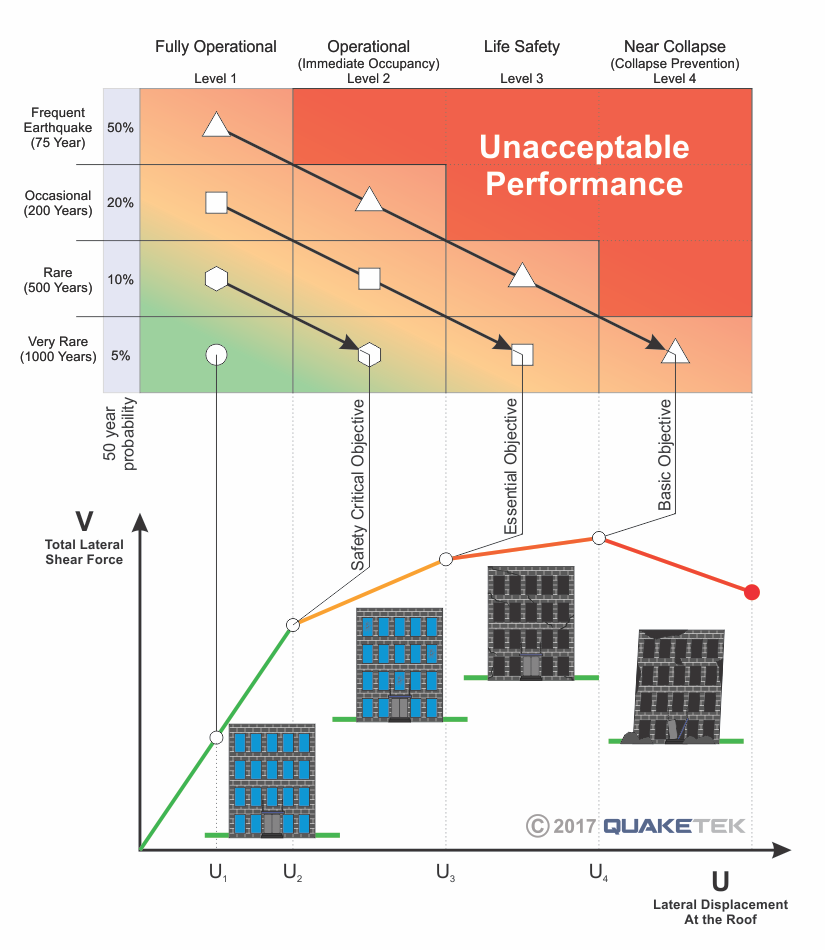What are Seismic Friction Dampers?
Seismic Dampers are used in damping the oscillations of a building during an earthquake. There are many types of dampers for buildings, and damping through friction tends to be one of the most efficient methods of dissipating seismic energy. The friction damper operates by dissipating kinetic energy through friction.
The Dampers allow the building to move elastically and dissipate the energy of the earthquake. This, in turn, produces substantial savings as structural elements can be optimized for cost savings.
Designed to activate before structural members yield, Friction Dampers act as a reusable fuse (no need for replacement after an earthquake) which simultaneously dissipate energy. In doing so, the building is able to withstand an earthquake without sustaining significant damage to its structure.

Why QuakeTek Seismic Products?
Our team has perfected the techniques and process of manufacturing several different categories of friction dampers over the last 30 years, ensuring repeatability, reliability and precise tuning for building applications all around the world.
Our purpose built facility ensures that the dampers are built in the most efficient manner possible and that costs are minimized without Ever sacrificing quality. While any two steel members in contact will provide frictional damping, it is often difficult to obtain consistent results. If set too low the damper could activate under service loads, while if set too high they could fail to activate at all. If poorly manufactured or if the wrong materials are used the friction damper can suffer from stick-slip, experience cold welding or experience excessive bolt relaxation. Friction dampers must, therefore, be built under controlled conditions, individually and thoroughly tested in order to ensure that they operate correctly.
Each friction damper is individually tuned and tested to ensure that it meets the loads and travels modeled by the Structural Engineer. More importantly, it allows for the highest possible degree of confidence in the actual ultimate response force. This precision is especially critical when using the friction damper as a force limiter as is the case in a Yielding restrained brace (YRB). 100% testing often is not, or cannot be carried on production units of many other technologies, (e.g. BRBs, viscoelastic or rotational friction dampers) and so is not usually a code requirement. Our 100% production testing at the full MCE stroke and full response load, provides complete confidence in the actual performance of each serialized damper.
While there are many competing technologies available (Compare seismic protection technologies here), and there is no perfect technology for all applications: few have the versatility and efficiency of our inline friction dampers when used for specifically for earthquake protection. Therefore, using this technology provides reliable earthquake protection all while making buildings more efficient and creating major savings in structural costs.

Quaketek is a vertically integrated company performing the design, fabrication assembly and testing all from our Montreal facility. This allows the highest level of flexibility for customization of our dampers as well as direct scheduling into our production for short lead times or just in time delivery.
Friction Damper Design
Friction Dampers are normally modeled directly in structural design software either directly (with a rectangular hysteretic loop) or more commonly, as a fictitious yielding element (how to model friction dampers). The two main outputs of the structural design being the required response force and travel. With these two parameters, Quaketek can provide Dampers ranging from 0.5kip (2kN) to 350kips (1500kN) of tested response force per damper with travels commonly between 0.5inches (12mm) and 12inches (300mm). Larger response forces can be generated by connecting the dampers in parallel, generating in excess of 1,400kips (6,000kN)
Dampers can be designed for indoor or outdoor applications as the finishes can be adapted for different environments.

Sustainable Design
Social Responsibility
As urban sprawl continues and populations in seismic areas grow, our communities and therefore buildings must become more resilient. Earthquakes in or near major cities have taught us time and time again that even if buildings do not collapse, damaged buildings means people are displaced and often left homeless. The poorest members of society are often most affected by seismic events and least likely to have safety nets such as earthquake insurance or the ability to leave the affected area. The current principle of collapse prevention through ductility is simply unsustainable!
The low cost and ease of use of friction dampers, allows governments and societies to simultaneously improve the resilience and environmental responsibility of communities.
Environment

